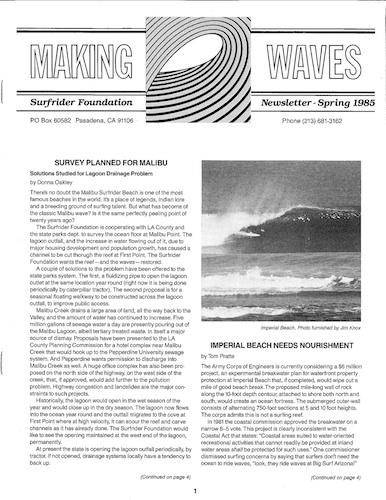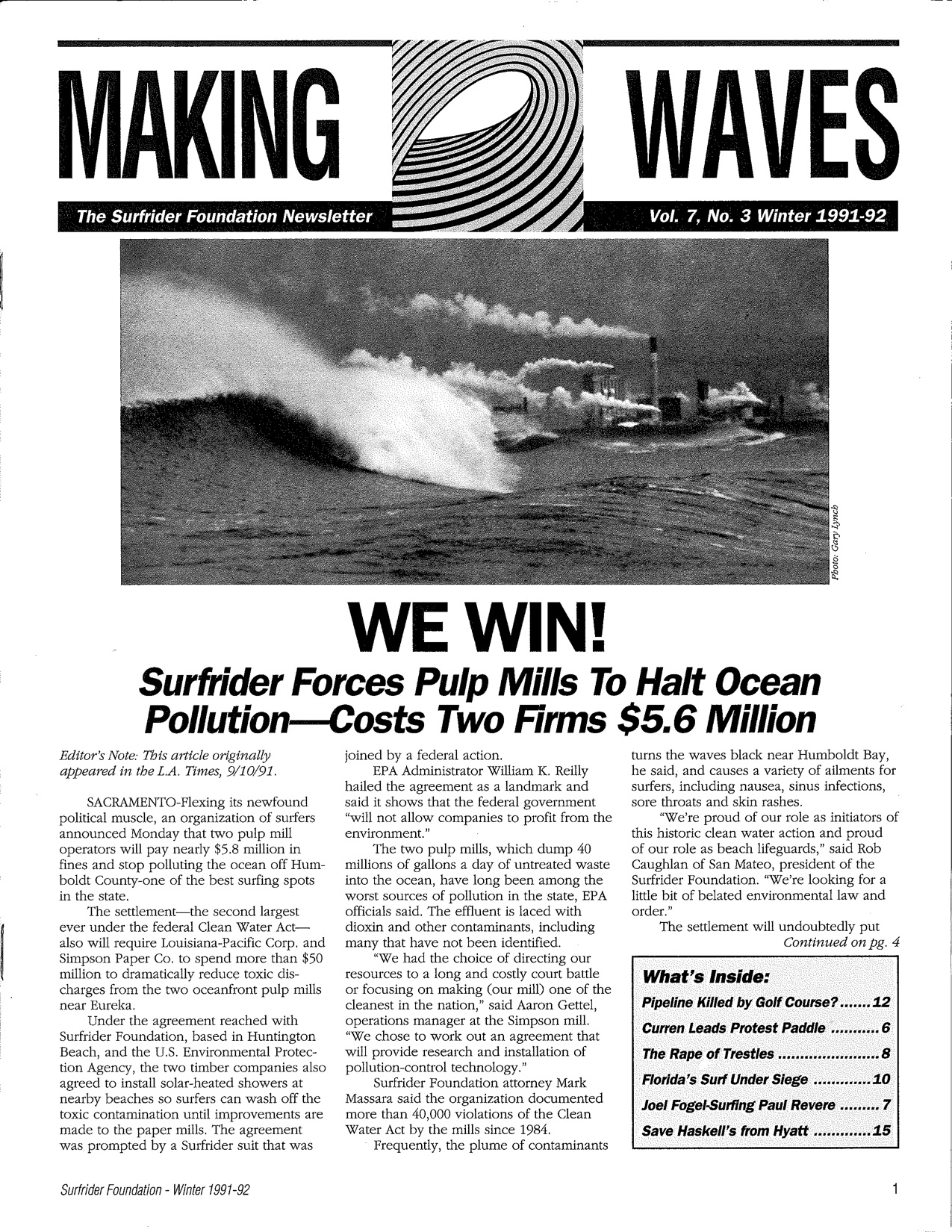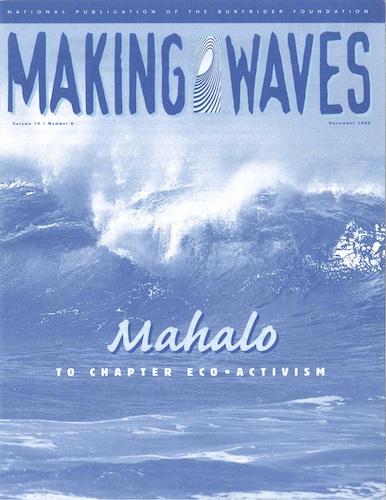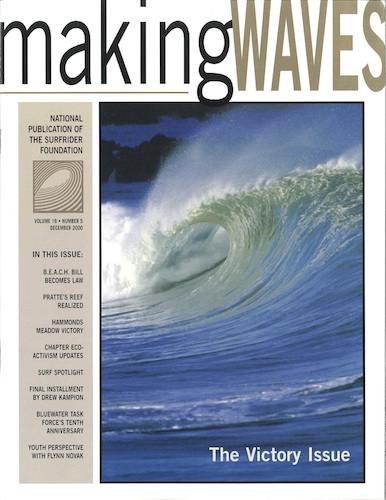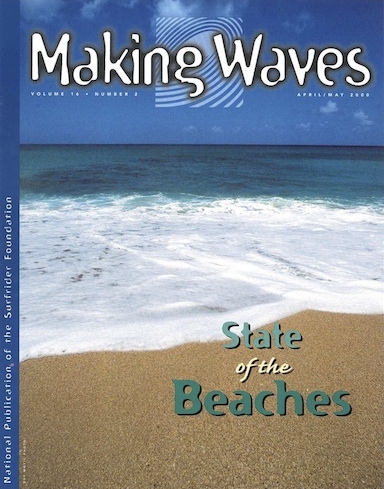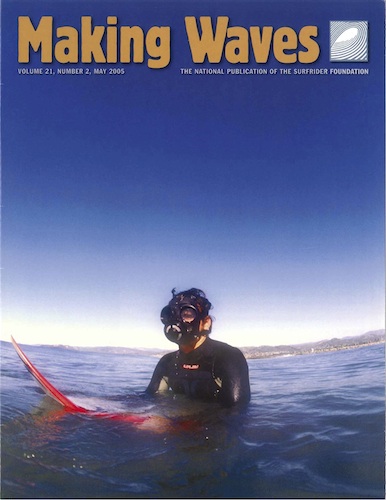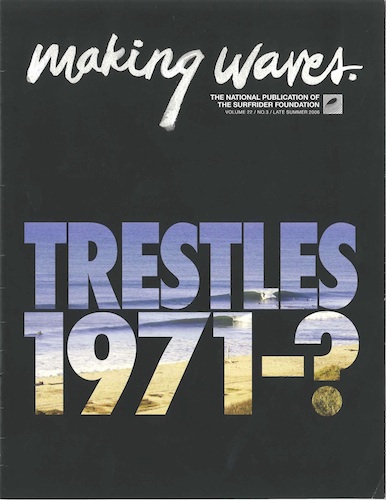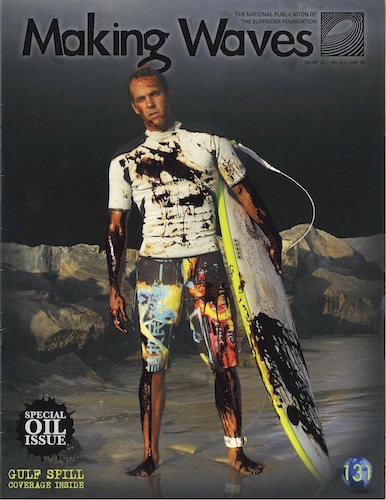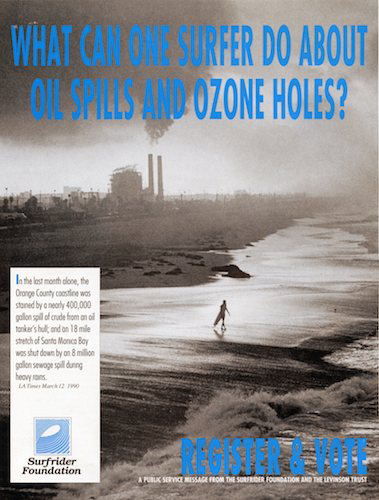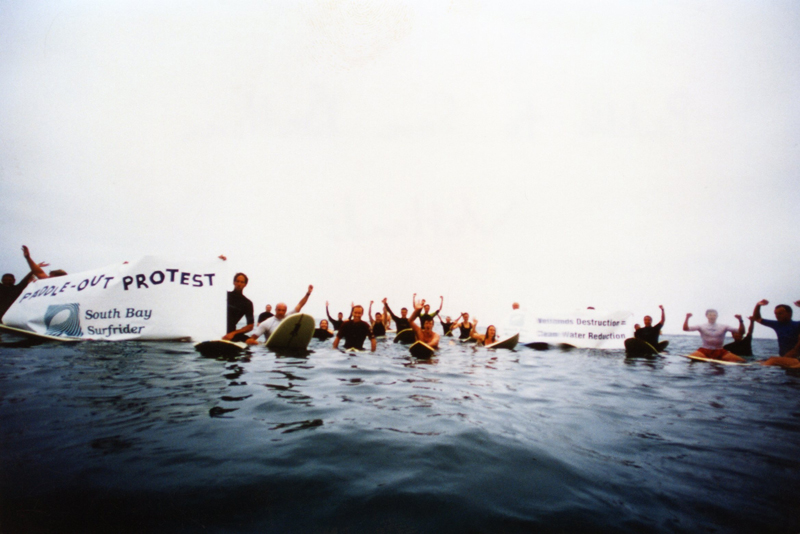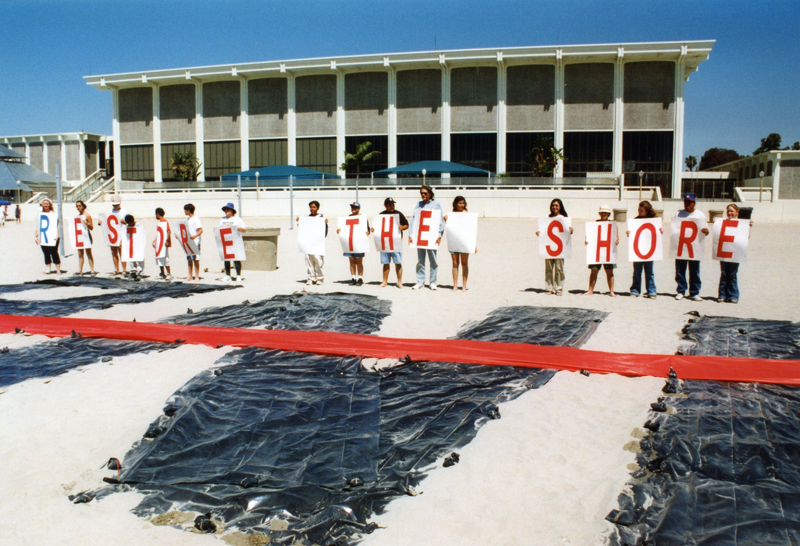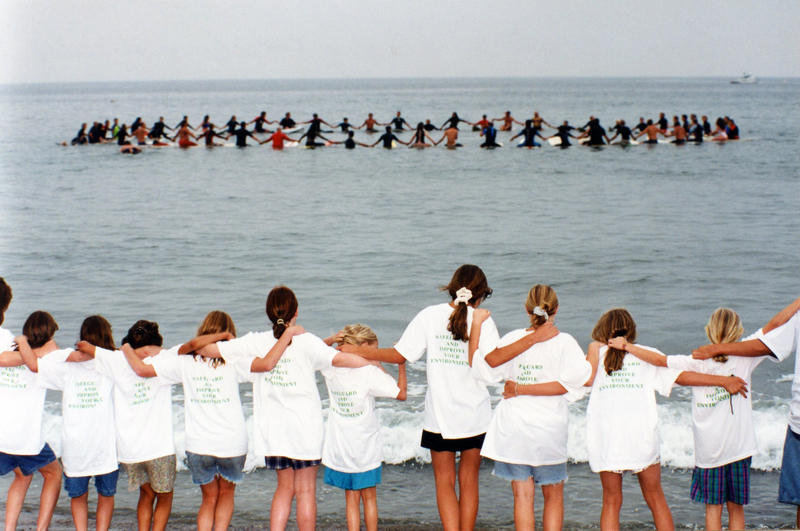1985
The Surfrider Foundation convinced the Santa Barbara County Board of Supervisors to lift a no-surfing ordinance at the Santa Maria Rivermouth in Santa Barbara County, California.
+
A federal court ruled in favor of the Surfrider Foundation when the U.S. Army Corps lost its battle over a proposed breakwater a Imperial Beach, San Diego, California.
+
Making Waves, the Surfrider Foundation's print newsletter, was created to provide members with organizational news, events, current coastal issues and scientific reports through contributions from staff, activists and volunteers. It was first published in the spring of 1985.
1987
The organization gained public beach access to South Cardiff State Beach (aka Seaside Reef) in San Diego, California, when the California State Parks Department installed the first ever electronic gate that automatically opened at dawn.
1989
The Surfrider Foundation, in a landmark decision, stopped the development of a marina (an ocean entrance and a mile-long breakwater) at Bolsa Chica State Beach in Huntington Beach, California.
1990
The Blue Water Task Force (BWTF), a volunteer-run, water testing, educational and advocacy program, was launched. Surfrider Chapters use the BWTF to provide valuable public health information to beach goers, creating public awareness and the political will to find and fix sources of beach pollution along the nation's coasts. It's the organization's most successful program to date.
1991
In the early 90's the Surfrider Foundation worked hard to support the implementation of new environmental laws, including the reauthorization of the Clean Water Act (which was enacted in 1972), to help prevent or curb the growing devastation of the nation's rivers, lakes, and coastal waters.
+
The Surfrider Foundation won the second largest Clean Water Act lawsuit in the United States history against two pulp mills in Humboldt County, California. As a result of this suit, one of these mills, the Louisiana Pacific mill, became the only pulp mill in North America to begin producing totally chlorine-free paper.
1992
As the U.S. coasts continued to be threatened by dirty water, irresponsible coastal development, the loss of beach access and destruction of its ecosystems, the need for coastal preservation grew. The Surfrider Foundation's global headquarters staff in San Clemente, California, received more requests for help than they were able to process. Thus the Surfrider chapter network was established, with the first chapters chartered in Orange County and San Diego County, California.
+
The Surfrider Foundation started to expand worldwide with affiliates in Europe (1990), Australia (1990), Japan (1993) and Brazil (1993).
1993
The San Diego Surfrider Chapter in San Diego, California, succeeded in getting a fine of $830,000 levied against the City of San Diego for violations in sewage outflows at Penasquitos Lagoon.
+
The California Coastal Commission made a landmark decision in Surfrider Foundation's and surfing's favor regarding the restoration of surfing spots lost due to the building of a coastal structure by Chevron Oil Company in El Segundo, California.
1994
The New Jersey Surfrider Chapter fought and won beach access for surfers at the Jersey Shore along the borough of Deal, just north of Asbury Park. This lawsuit sent a signal to other New Jersey towns not to be restrictive of surfer's rights to access.
1995
The Surfrider Foundation's website launched, and several Surfrider Chapters started websites.
+
The Surfrider Foundation and the Long Beach/North Orange County Surfrider Chapter saved 930 acres of coastal wetlands at Bolsa Chica in Huntington Beach, California.
+
The Surfrider Foundation settled a lawsuit with the City of Honolulu, Hawaii:. The city was penalized for over 13,000 Clean Water Act violations at Kailua Bay, Hawaii.
+
Despite some significant campaign wins, the Surfrider Foundation was struggling to make ends meet. Pearl Jam, an American rock band, donated $50,000 to the Foundation from two of their San Diego shows. The donation not only allowed Surfrider to remain open, it enabled the Foundation to expand its chapter network, catapulting it even further into an activist-driven grassroots organization.


